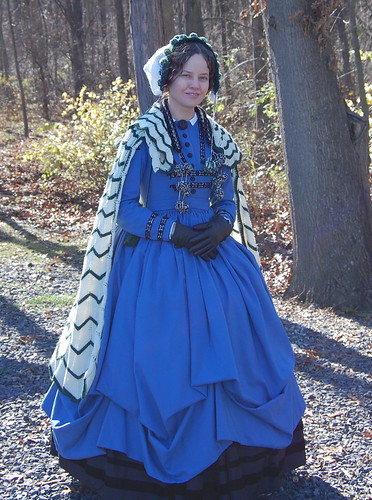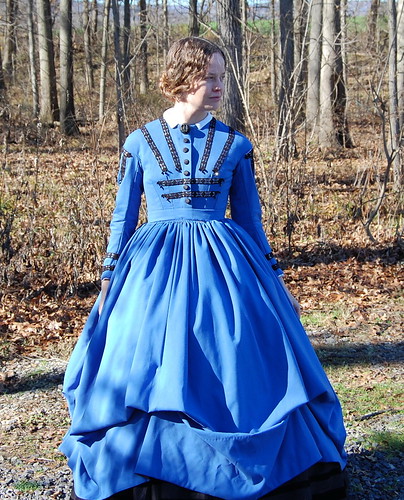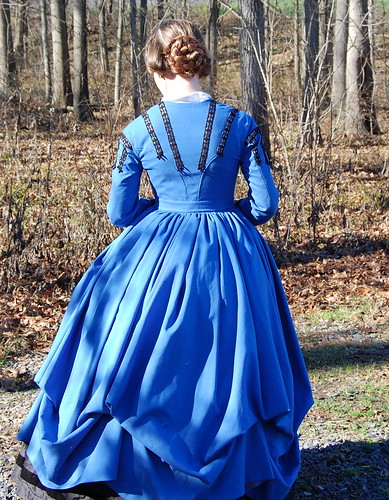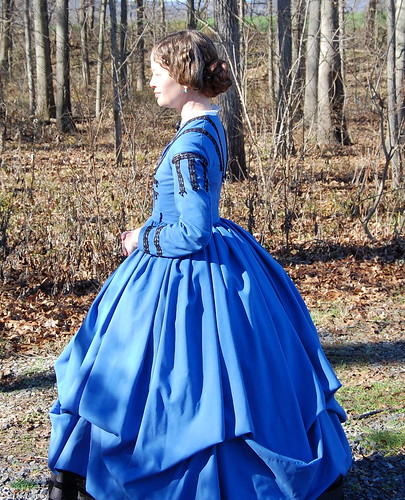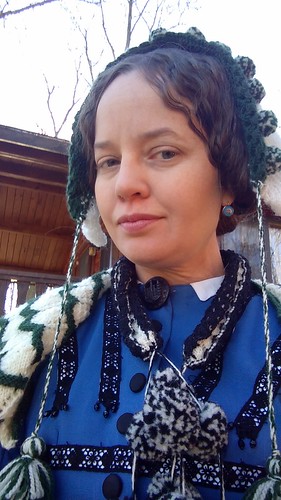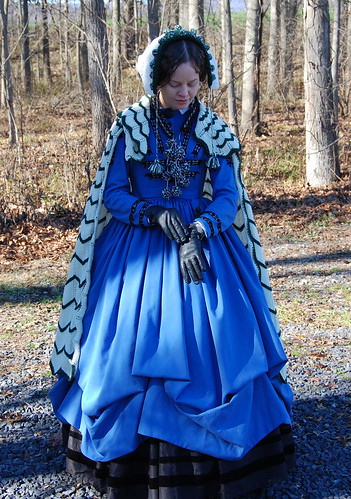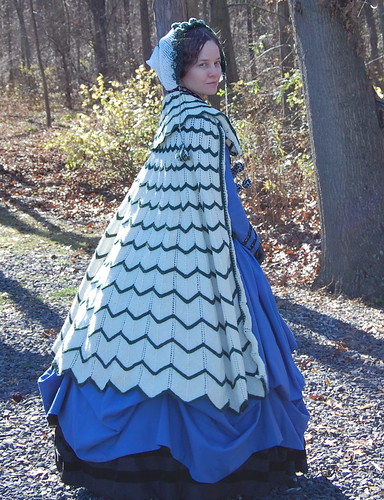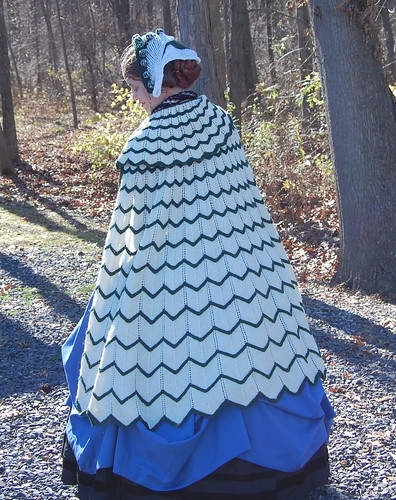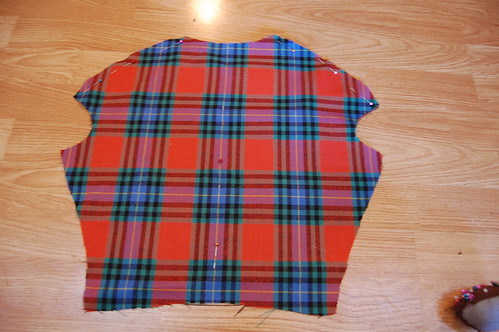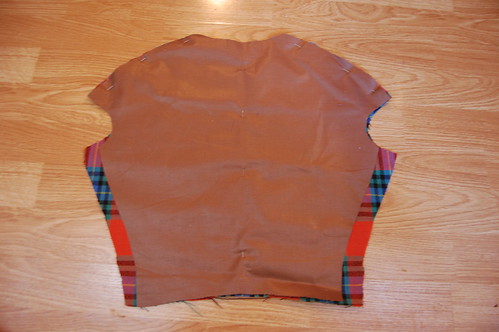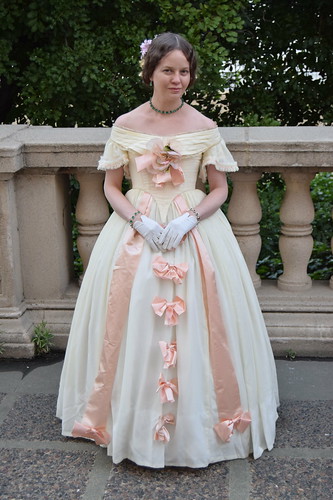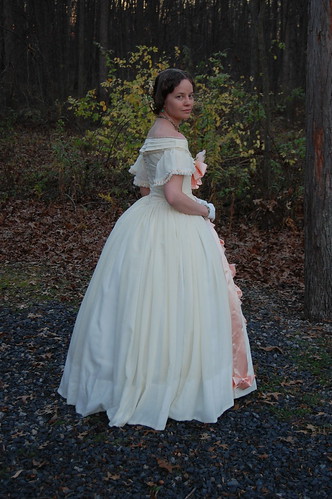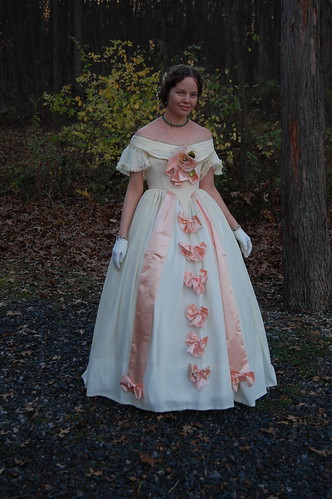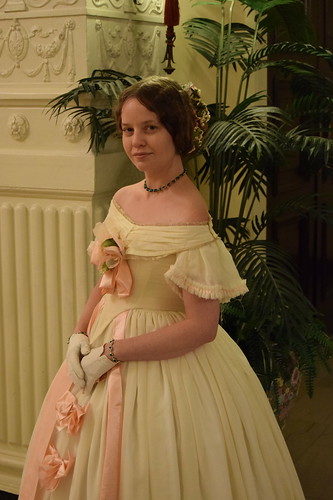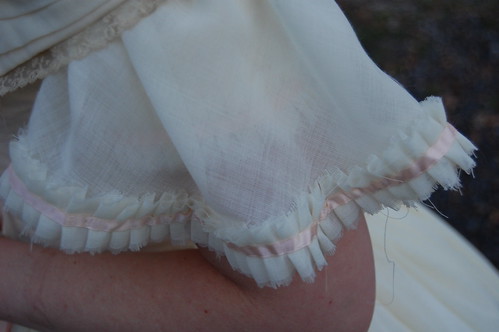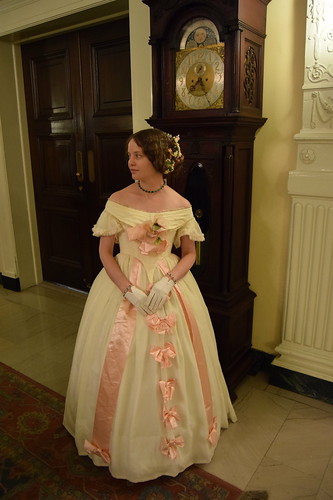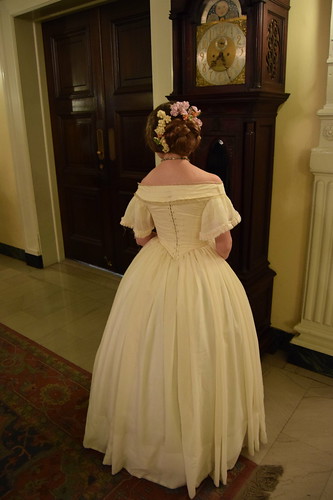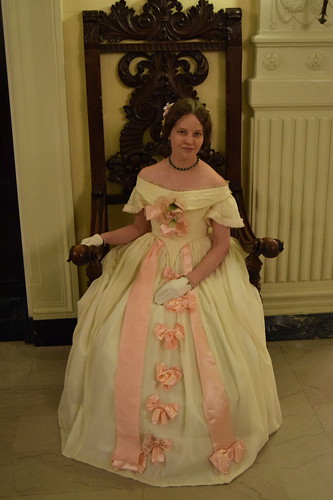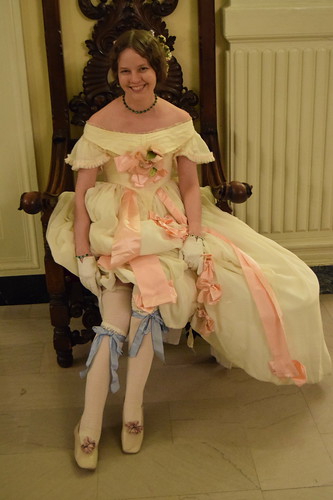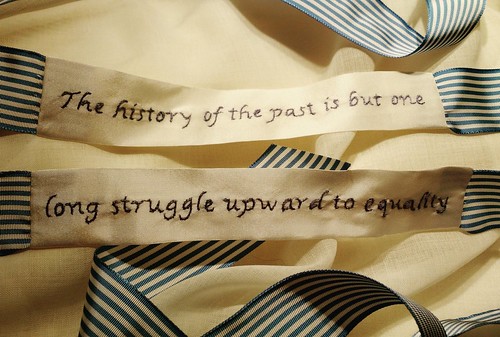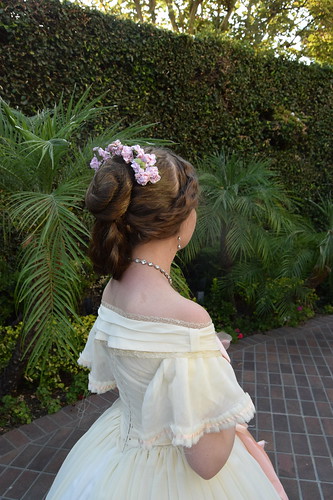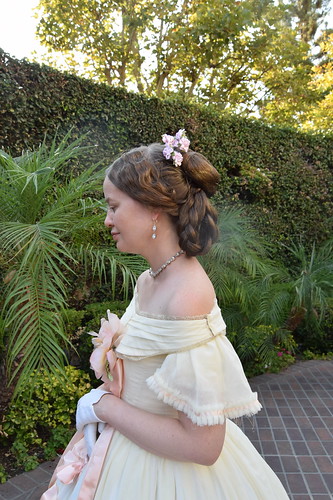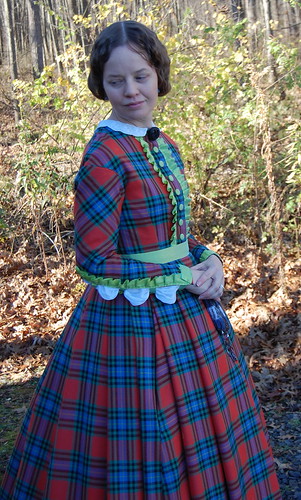
One of my favorite things about the mid nineteenth century is the delightfully loud color combinations. Lime green and orange plaid? Of course!
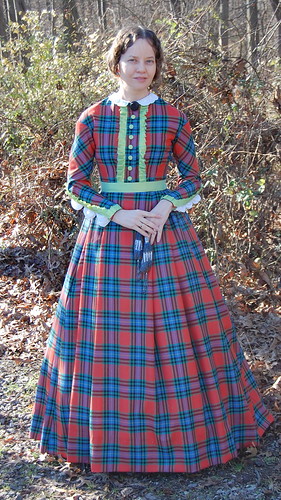
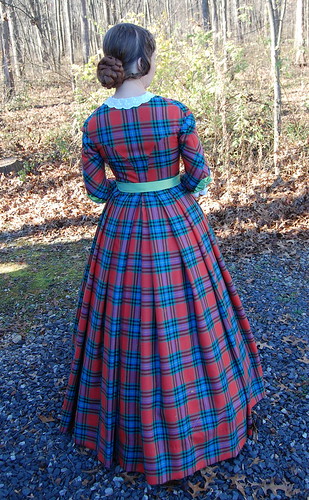
Construction is mostly detailed in this post. The dress is made of a lightweight wool MacLay modern tartan. Loud, non tartan, plaids are difficult to find! Most I was coming across were subdued and would make nice modern business suits. Not quite what I wanted. The lime green plaid silk tafetta is from Pure Silks. It's lined with brown polished cotton from Needle and Thread. I'm wearing it over my 1863 corset, a petticoat, and the Laughing Moon elliptical hoop.

The skirt is transitional in shape, leading to what would eventually become the bustle. It's slightly gored, and then knife pleated with a large box pleat in front and the other pleats leading to an inverted box pleat at the center back. The bottom of the skirt is only a few inches bigger than the top. You can see this in the shape of the plaid stripe at the bottom of the skirt seam.
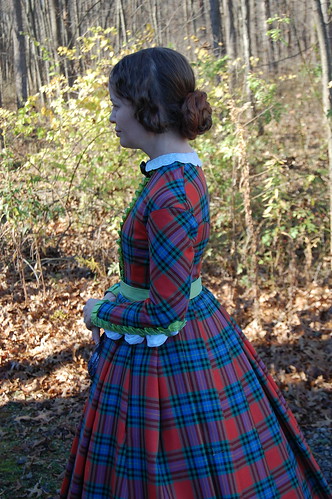
The wool for the sleeves is cut on the bias while the lining remains on the straight of grain. I initially cut the sleeves on the straight as well, thinking that I wanted a vertical line on them. Thankfully I had enough fabric to recut the sleeves, as the originals made the bodice look like a 1990s flannel shirt. Not the look I went for in the 90s, and definitely not the look I was going for here!
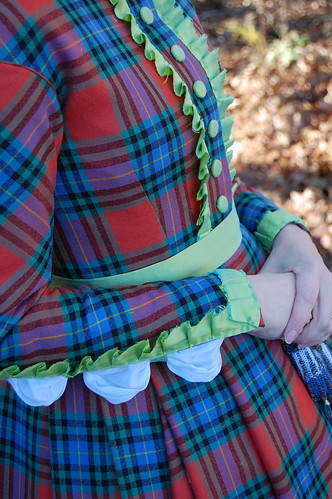
The bodice trim is based on this CDV. The sleeves are inspired by this extant dress and this CDV. Both show sleeves open down the back connected with straps. Though neither shows pleated trim, they both have trim so I feel it's a logical leap. The undersleeves are tubes of cotton with a cuff that are basted into the sleeves and then pulled through the straps into puffs. I'm holding my miser's purse from an 1863 Godey's pattern.

During Remembrance Day, I had a tintype made in the dress at the Victorian Photography Studio in Gettysburg. I love the color shift in the dress--it's an excellent reminder that their world wasn't black and white!
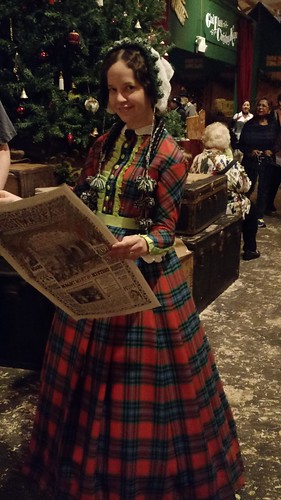
I wore the dress again to Dickens Faire in San Francisco.
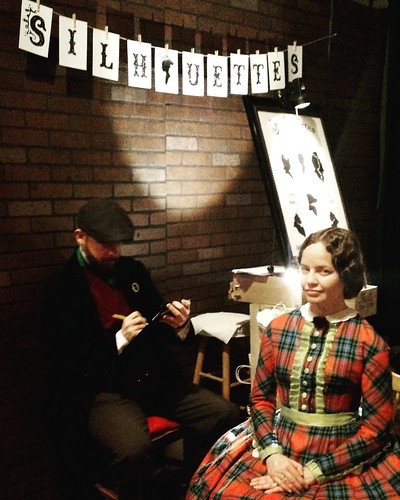
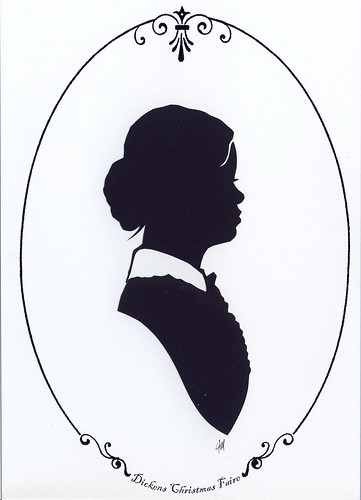
At Dickens Faire, I had a silhouette made my Silhouettes by Jordan. Not much a view of the dress, but still, wonderful to have another opportunity for a period image!

